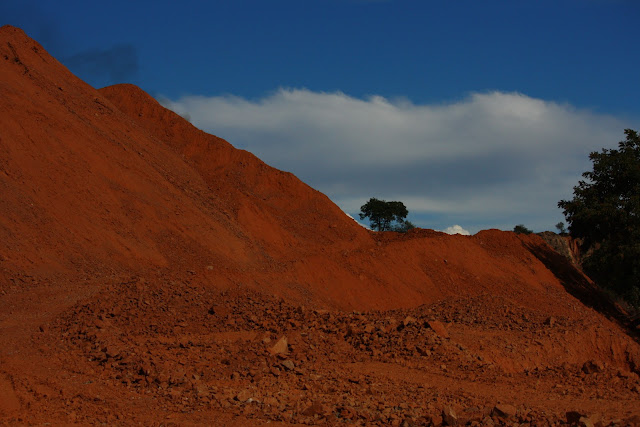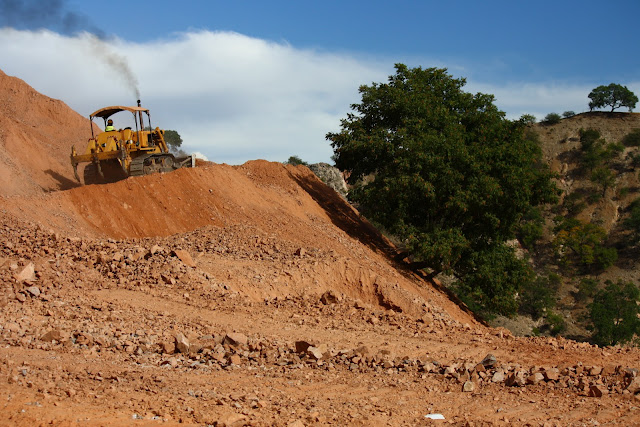What does ¨primary dirt road¨ actually mean in Bolivia? It means 100km of cobblestones and 50km of rocky adventure.
The paved road ends when you enter a small town called Torota. The road turns to cobbles. You think, hey, this is cute.
Then you leave the town, and the cobblestones keep going. Well this is interesting...
And then they keep going, and going... and you shake and bump your way along a narrow two lane road along a ridge with a thousand foot drop to one side. I guess cobblestones are better than washed out dirt?
Eventually you make it to a valley where you do a good 10-15 miles an hour along a riverbed with rocks and small streams as the main hazards. It´s tough, and exhilarating.
Finally, the roads opens up and it´s good concrete for the last 90km to Sucre. Or is it?
 |
| Earlier today, there was a road there, until there was a landslide (!). |
 |
| Waiting while the CAT bulldozer makes a platform for traffic to use... |
 |
| First trucks across the dirt. I held my breath hoping it wasn´t going to give way. |
 |
| Not a lot of room for error for those truck drivers. |
Unless there´s a landslide in the way. Now that´s a tough job - landslide removal professional. Let me just say that when I saw some sliding gravel during my traverse of that ¨platform¨ I got the hell out of there. Yikes.
And then you ascend up a ridge to Sucre, which is built in a saddle in the mountains. It´s incredible, city on a hill kind of stuff. A white city with gorgeous cathedrals on top of a mountain ridge. Wow.
 |
| Welcome to Sucre. |
 |
| Almost like something out of Gladiator. |
 |
| Driving on the top of ridges - what a view! |
 |
| Part of the city nestled in the mountains. |
 |
| Cobblestones and dirt. |
No comments:
Post a Comment